By Chelsea Blyth
Here in Alberta, we are lucky to share our landscape with a variety of incredible wildlife, including two elusive wild cats of the genus Lynx: the bobcat (Lynx rufus) and the Canada lynx (Lynx canadensis). While both species are found in our province, their differences in appearance, behaviour, and habitat preference are key to distinguishing these cats in the wild. Understanding these differences not only deepens our appreciation for Alberta’s rich biodiversity but also plays a role in conserving these remarkable species.
Physical Differences: Spotting the Subtle and Not-So-Subtle Traits
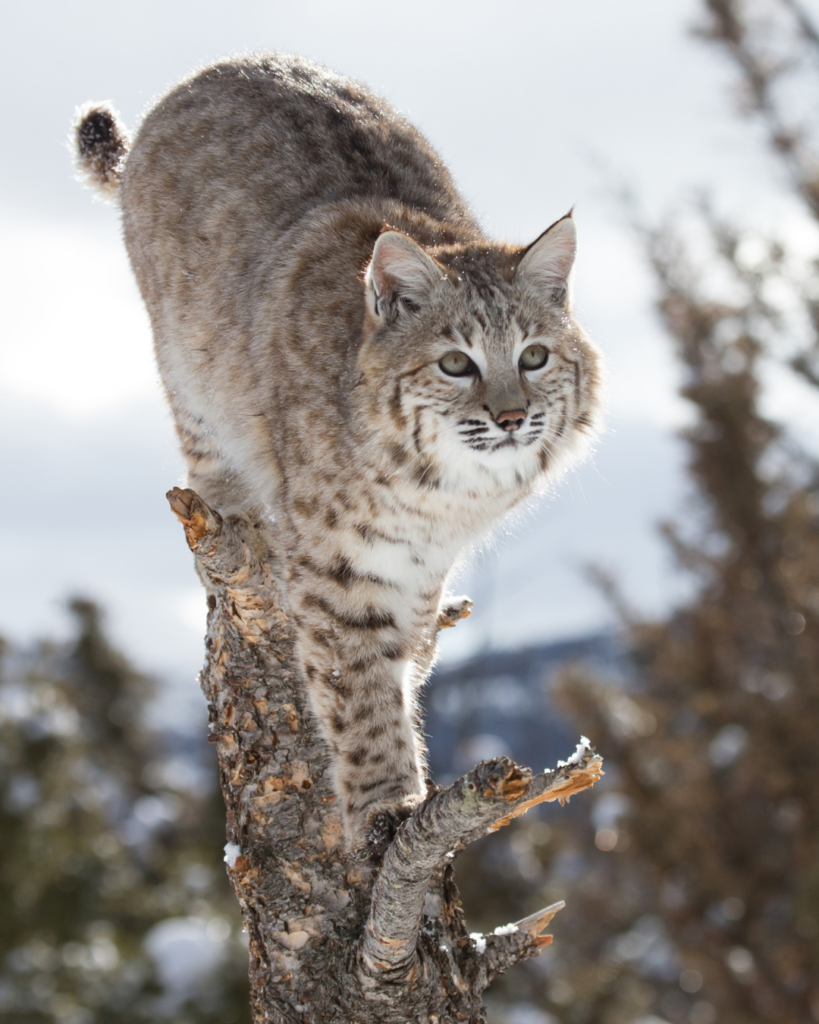
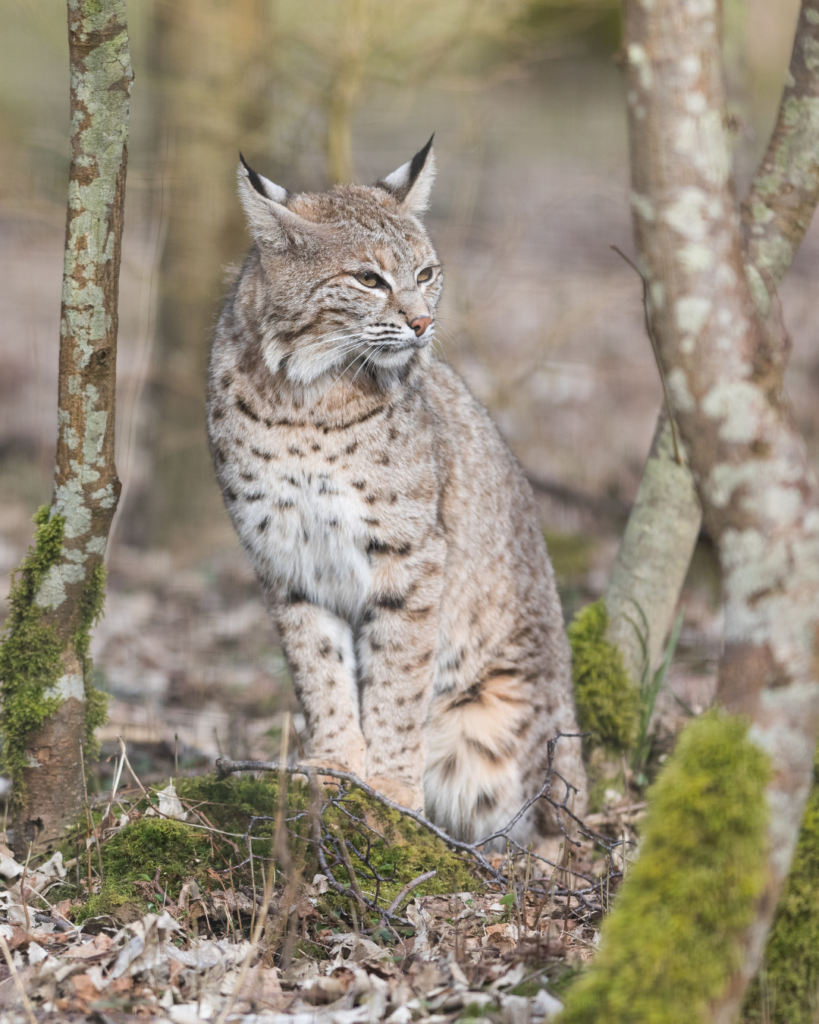
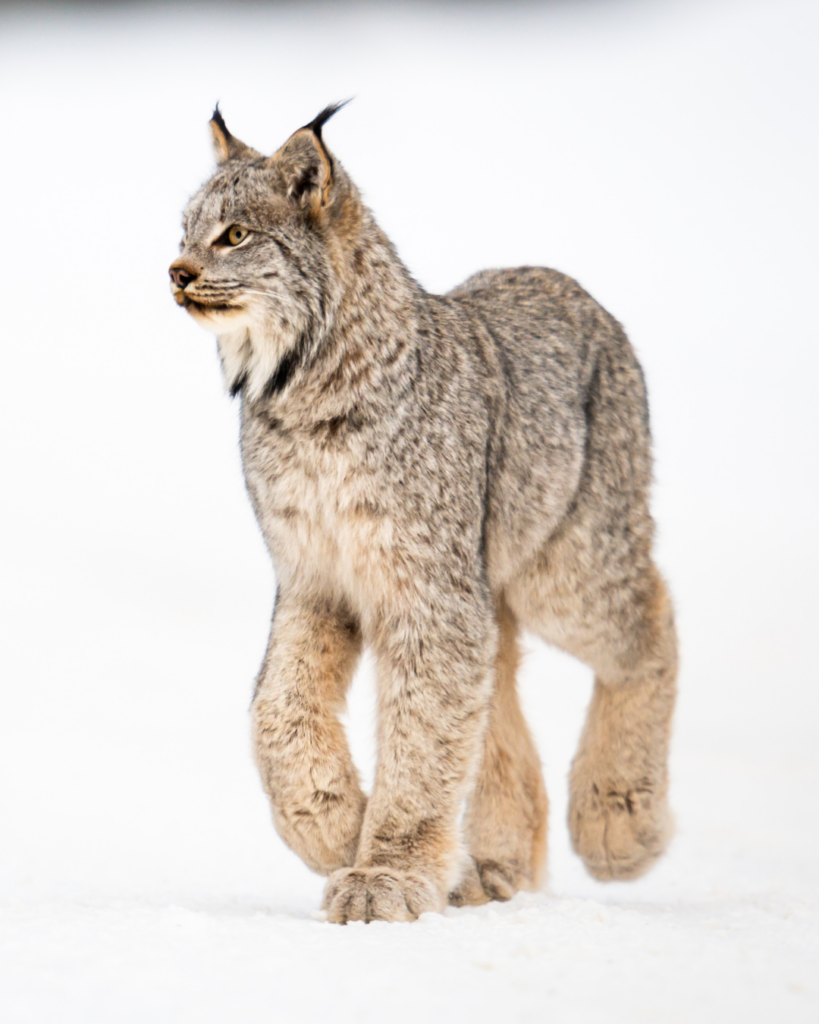
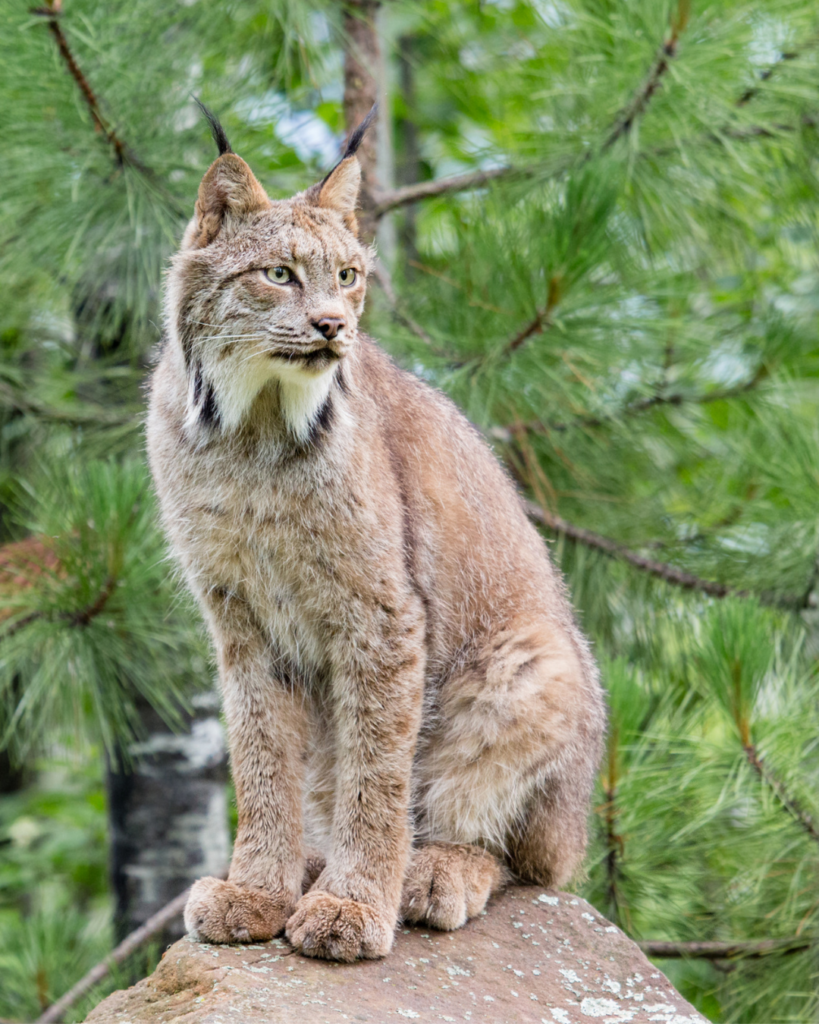
At first glance, bobcats and Canada lynx may appear very similar, but a closer look reveals key distinctions in size, fur, and facial features.
The bobcat is generally smaller than the Canada lynx, weighing between eight and sixteeen kilograms, while the lynx typically weighs between eight and twenty kilograms. Lynx, however, appear more substantial due to their longer legs and larger paws. One of the most noticeable physical differences lies in their tails. The bobcat’s tail has a distinctive black tip on the upper side, with a white underside, while the lynx’s tail is completely black at the tip. This simple feature is often the easiest way to distinguish the two species in the wild.
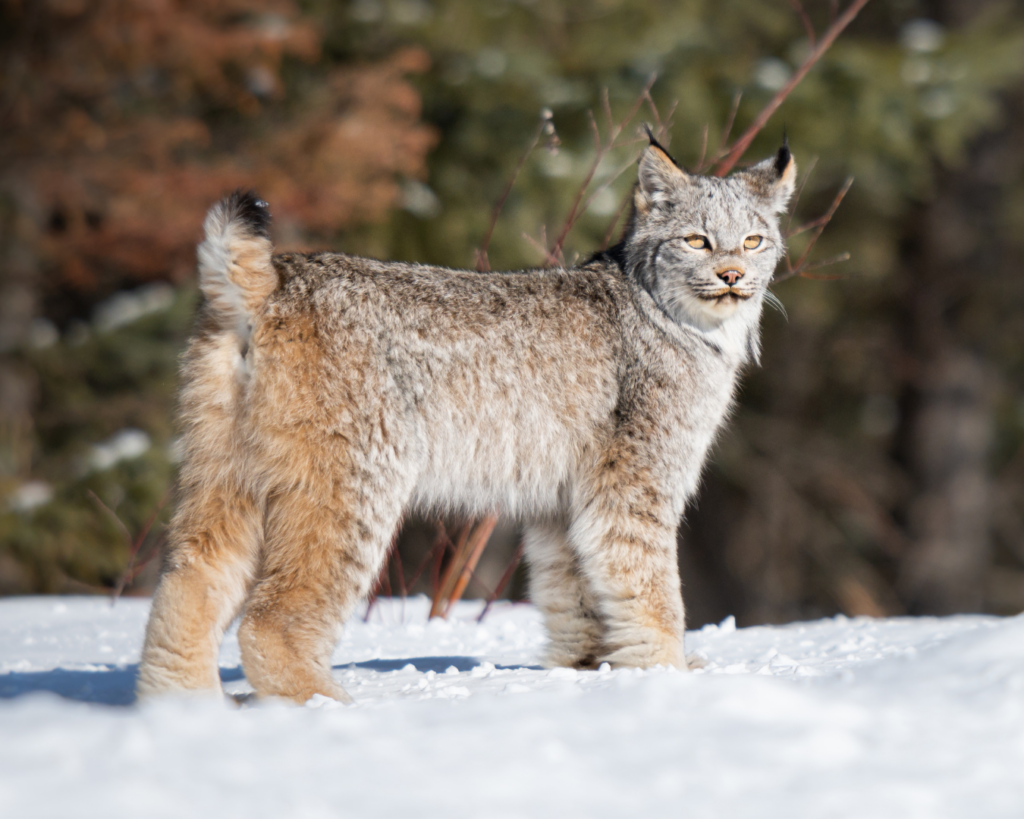
Another distinguishing feature is their ear tufts. Both species have tufts of fur on their ears, but the lynx’s ear tufts are significantly longer and more pronounced. Additionally, the lynx’s fur is generally thicker and lighter in color, helping it blend into snowy environments. The bobcat, on the other hand, sports a more reddish-brown coat with distinct black spots, making it well-suited for wooded and scrubby environments.
Behavioural Differences: Hunting Strategies and Social Habits

Both bobcats and Canada lynx are solitary animals, but their behaviours, especially in terms of hunting and territory, vary greatly. In Alberta, bobcats are the more adaptable hunters. Their diet is diverse and opportunistic, ranging from snowshoe hares and rabbits to birds and even small deer. Bobcats have been known to thrive in both wild and semi-urban areas, from the foothills of the Rockies to the outskirts of cities like Calgary and Edmonton.
Lynx, on the other hand, have a more specialized diet. In the boreal forests of northern Alberta, they rely heavily on snowshoe hares as their primary prey. The Canada lynx’s population cycles closely follow the fluctuations in snowshoe hare populations, and during lean years, lynx numbers tend to drop significantly.2 This specialization is a major difference between the two cats—bobcats are more flexible hunters, while lynx are focused on hares
When it comes to hunting techniques, bobcats are known for their bolder and quick-chase style. In contrast, lynx are patient hunters, often sitting still in the snow for hours, waiting for a hare to wander too close. This behaviour aligns with their physical build: while bobcats are fast and agile on uneven ground, lynx are designed to excel in the deep snow of Alberta’s northern forests.
Habitat: Where They Roam in Alberta
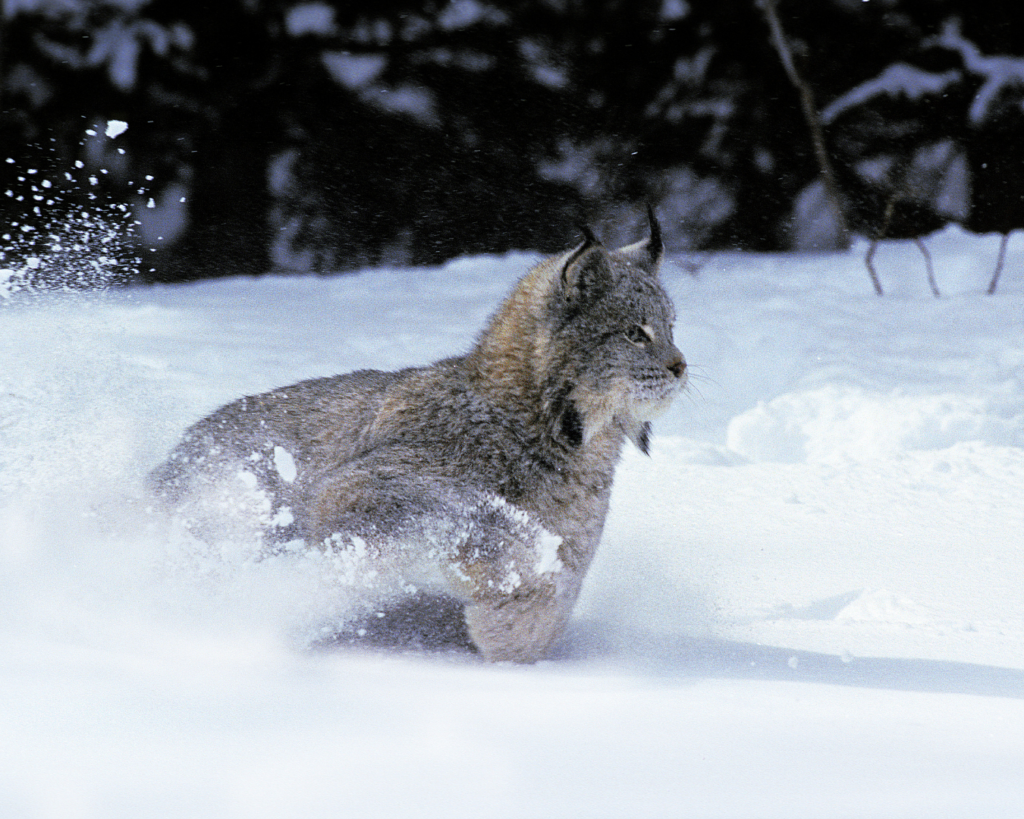
One of the most significant differences between bobcats and lynx in Alberta is their habitat preference. Bobcats are remarkably adaptable and can be found in a variety of habitats, including the dry, rugged areas of southern Alberta, near Lethbridge and Medicine Hat, as well as in the foothills and along forest edges. Their ability to live in areas with less snow makes them a common sight in the southern and central regions of Alberta.
Canada lynx, however, prefer the dense boreal forests of northern Alberta, where heavy snow and vast wilderness provide the ideal environment for hunting snowshoe hares. They are often found in areas like Wood Buffalo National Park or the northern Rockies, where snow depth and forest cover suit their survival strategies.3 Alberta’s cold winters and deep snow are not a hindrance for the lynx; in fact, they thrive in these conditions due to their large paws, which act like snowshoes, giving them an advantage over their prey.
Conservation Status in Alberta
In Alberta, both bobcats and lynx are legally trapped and hunted, although management plans are in place to ensure that populations remain sustainable. Bobcats, due to their adaptability and wide range, are considered a species of “Least Concern” by the International Union for Conservation of Nature (IUCN). In fact, bobcats have been expanding their range northward into parts of central Alberta, as they adapt to changing environments and climates.4
The Canada lynx, on the other hand, is listed as “Threatened” in the United States, although they are not currently considered endangered in Alberta. However, Canada lynx is classed as “Regionally Endangered” in Nova Scotia and New Brunswick.5 Lynx populations are closely monitored, as their reliance on snowshoe hares makes them vulnerable to habitat loss and changes in prey availability. In the future, climate change and human encroachment on boreal forests could present significant challenges for lynx in Alberta.
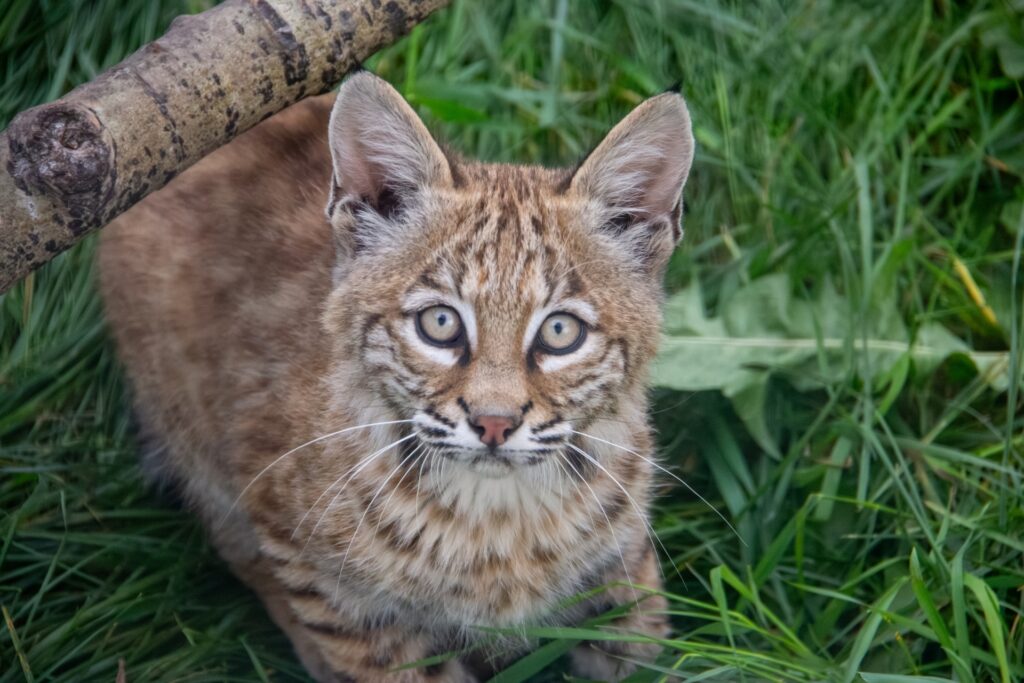
Conclusion
While bobcats and Canada lynx may look alike at first glance, their physical characteristics, behaviours, and habitat preferences make them unique in their own ways. Bobcats, with their adaptability, thrive in Alberta’s more open and varied landscapes, while the Canada lynx is a specialist of the north, perfectly suited to the deep snow and dense forests. By understanding the differences between these two species, we can better appreciate Alberta’s wild cats and work towards ensuring that they continue to thrive in our province for generations to come.
References
- Wild Cat Family. “Bobcat vs. Canada Lynx – What Are the Differences?” Wild Cat Family. https://www.wildcatfamily.com/bobcat-vs-canada-lynx/
- S. Fish and Wildlife Service. “Canada Lynx.” U.S. Fish and Wildlife Service, June 2013. https://www.fws.gov/species/canada-lynx-lynx-canadensis.
- University of Michigan. “Canada Lynx.” Animal Diversity Web, accessed September 15, 2023. https://animaldiversity.org/accounts/Lynx_canadensis/
- International Union for Conservation of Nature. “Lynx canadensis.” The IUCN Red List of Threatened Species 2017. https://www.iucnredlist.org
- International Society for Endangered Cats (ISEC) Canada. “Canada Lynx – Conservation” Range map IUCN Red List (2008), Updated 2016. https://wildcatconservation.org/wild-cats/north-america/canada-lynx/#:~:text=The%20population%20is%20considered%20stable,Canada%20Lynx%20and%20the%20Bobcat.

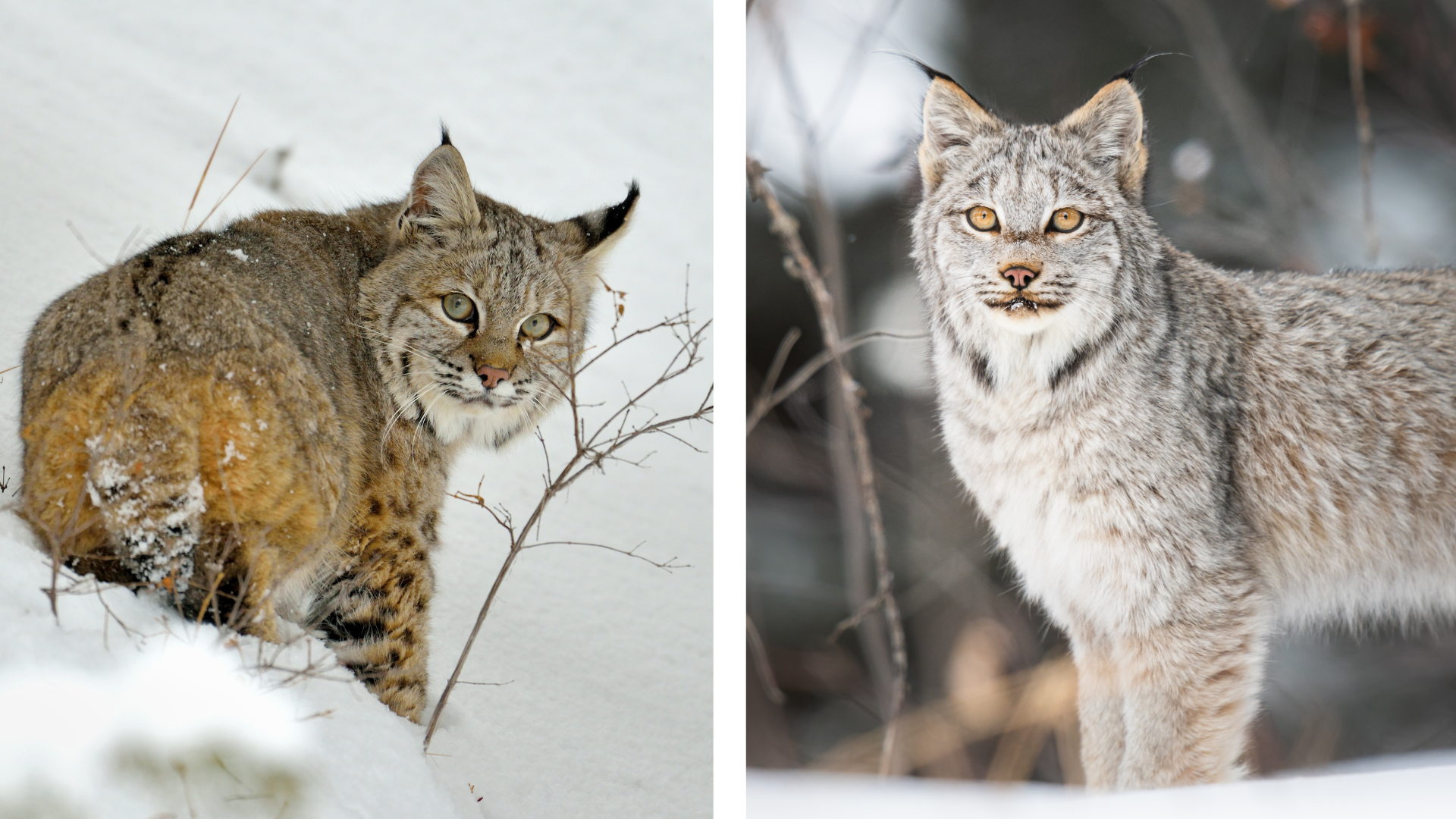

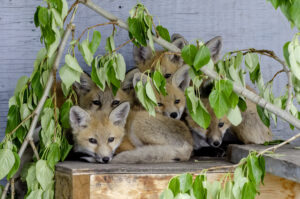
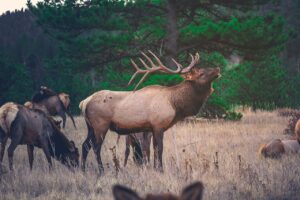


1 thought on “Differences Between Bobcats and Canada Lynx: How to Tell them Apart”
oof I could tell right away